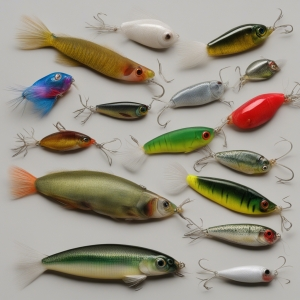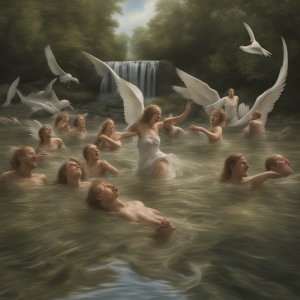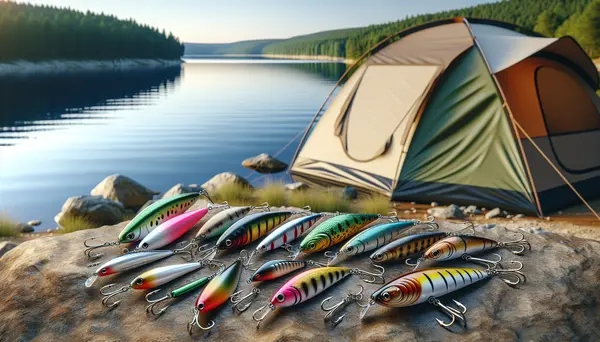Table of Contents:
Introduction: Unraveling the Mystery of Lure Selection
Embarking on a fishing journey introduces a plethora of choices, and among the most essential is lure selection. Whether you're an experienced angler or stepping into the water for the first time, this article aims to simplify the science behind choosing the right lure. Packed with expertise knowledge and practical tips, you'll be able to understand better the factors affecting lure functionality and ultimately make successful lure selections, improving your fishing experiences.
We'll delve into factors including water conditions, lure shapes, sizes and colours, and we'll explore how these fundamental elements contribute to a successful fishing trip. This knowledge will elevate your fishing game, enabling you to target specific fish species more efficiently. Understanding the science of lure selection is sure to infuse more fun and success in your angling adventures.
Understanding Lure Types: Crankbaits, Spinnerbaits, and Jigs
The vast world of fishing lures can initially seem intimidating, with an array of choices that include crankbaits, spinnerbaits, and jigs. Comprehending the versatility and function of each of these types is invaluable for any keen angler.
Crankbaits, like their name suggests, are designed to move through the water with a cranking action, mimicking the movement of small fish. Ideal for covering large areas of water, crankbaits dive when the angler reels in and return to the surface when the retrieval stops.
On the other hand, Spinnerbaits feature one or more metal blades that spin, creating vibrations in the water. The spinning action reflects light and mimics the movement, and flash of small fish, attracting predators.
Jigs are versatile lures designed to look like prey with their weighted lead head opposite a sharp hook. The angler can manipulate the motion of a jig by jerking the rod tip, making them irresistible to fish.
Choosing the right lure type for your angling style and target fish, therefore, is a crucial step forward in your fishing journey.
Fishing: Advantages and Disadvantages of Targeted Lure Selection
| Pros | Cons |
|---|---|
| Greater chances of catching a specific type of fish | Reduces chances of catching other species |
| Can be matched to the local diet of the targeted fish | Requires knowledge of the local fish population and its feeding habits |
| Can attract larger and more aggressive fish | May attract unwanted or predatory species |
| Proper lure selection can save time and resources | Requires trial and error, which can be time consuming and costly |
The Science of Color Selection

Color plays a pronounced role in lure success. A basic understanding of how fish perceive color can give an angler an edge. Fish have the ability to discern different shades, even in deep, dark water where color might seem inconsequential to us.
For instance, red and orange, seen as dark hues to us in deep water, are easily identifiable to fish. Black and blue are also bullish colors for deep water as they maintain their contrast better at lower light levels. Shiny, silvery lures are effective in high-visibility conditions, as they do a great job of imitating small, vulnerable fish.
When fishing in clear, shallow water, opt for life-like, natural colors. In contrast, in turbid and rough water conditions, it's often best to use vibrant, bright-colored lures. Bolder colors like white, neon, or yellow can be easily seen against the murky backdrop.
Remember, the key point is not to outsmart the fish, but to think like it. Paying careful attention to water visibility, time of day, and even the weather can greatly improve your lure color choice and overall fishing performance.
In conclusion, there's no one-size-fits-all when it comes to lure color selection. It often becomes a game of trial and
Water Conditions and Lure Selection
Understanding the conditions of the water you're fishing in is paramount to a successful day at the lake or river. Among the key environmental factors, water temperature and clarity significantly influence fish behavior, hence your lure choice.
Firstly, water temperature affects the metabolism of fish, in turn influencing their feeding activity. Cool water slows down fish metabolism, reducing their food intake. Therefore, in colder conditions, smaller lures are more effective because fish won't go out of their way to chase larger prey. On the other hand, warm water speeds up fish metabolism, making them more aggressive feeders, hence larger lures and more active lure techniques can be used.
Secondly, water clarity decides how well fish can see. Clear water means fish can see your lure from further away. Use natural colors and lifelike patterns in clear water. Murky or muddy water limits a fish's visibility. Here, bright and reflective lures can work magic by standing out in low visibility.
Note that the wind, current, and weather conditions also impact water condition. Angling under an overcast sky or in choppy water can cause fish to be less visual and more reliant on their lateral line to detect vibrations, favoring lures that make more vibration and noise.
Remember, lure selection should be versatile. Adapting to the conditions and trying new techniques when the current one isn't fruitful is how you master the art of lure selection. Testing and learning are inherent to the angler’s journey.
Factoring in Fish Behavior

The behaviors and habits of the fish you're trying to catch can significantly influence your lure selection. One primary aspect to consider is the fish species’ feeding habits.
Some fish are aggressive predators, typically attracted to fast-moving lures that mimic their natural prey. For such fish species, quick-action lures such as crankbaits and spinnerbaits can be effective.
Other fish are scavengers, preferring slow moving or stationary meals. This behavior requires the angler to use slower, bottom dwelling lures like jigs and soft plastic baits.
Apart from feeding habits, understanding when and where fish species are active is equally significant. Some fish are active during the day, others are night feeders. Fish also vary according to their preferred habitat – whether they are open water dwellers, bottom dwellers, or prefer cover like grass and structures. Each of these factors plays a role in determining the best luring method.
Overall, understanding fish behavior is integral in choosing the right lure. By factoring in the species-specific behaviors and habitats, anglers can strategically select lures that increase chances of a successful catch.
Incorporating Seasonal Changes
Seasonal changes profoundly impact the behavior of fish, and thus, your lure selection. From feeding habits to migration patterns, fish adapt to different seasons in unique ways.
In spring, post-spawn fish tend to stay in shallow water to warm themselves after the chilling winter. Smaller, bright-colored lures are the go-to choice, as they offer easier targets for the fish recovering from spawning exertion.
Summer turns fish more active due to warmer water temperatures. Greater activity means aggressive feeding, making this the perfect time to try your larger, more action-demanding lures. Also, consider using deeper-diving lures, because fish might seek cooler water layers below the surface during the hottest summer days.
Come autumn, fish begin preparing for the upcoming winter by bulking up on food. Hence, lures mimicking the abundant fall baitfish would be highly effective. Fast-moving lures can also provoke chase instincts in fish before the slow winter days arrive.
In winter, the frigid water slows fish metabolism significantly. They become less active and huddle closer to the bottom. During this time, slow-moving, small, and naturally-colored lures work best. The key is to provide an easy meal that doesn’t require the fish to expend much energy.
By adjusting your lure selection to the seasonal behavior of your target fish, you’re taking advantage of the cycles nature provides, and this is sure to elevate your angling success rate.
The Role of Experimentation in Lure Selection

Experimentation is a pivotal aspect at the heart of successful lure selection. Each fishing environment is different and can shift unpredictably with weather and seasonal changes. Despite our best understanding of the theories and principles of lure selection, on-the-spot adaptive strategies and a willingness to experiment can often make the key difference.
Don't be afraid to switch out your lure if you're unsuccesful in your initial attempts. Keep in mind that fish might choose to ignore a bait for no visible reason at all, even when you've made the theoretically 'perfect' lure choice. In such cases, changing to a different color, size, or type of lure can turn things around.
Introduce variety in your lure movements and retrieval speeds, as sometimes, a simple change in the action of the lure can trigger bites. Experimentation should extend to different depths as well. Try a topwater lure, delve into middle water depths with a crankbait and don’t shy away from reaching the bottom with a jig. Given that fish do not always stay at the same water depth, altering the depth at which you present your lure can yield different results.
Experimentation goes hand in hand with observation. Cast a keen eye on the conditions, types of fish responding, and the lure characteristics that work. Recording these observations will not only cement your understanding but also aid in predicting future successes.
In conclusion, the pinnacle of successful lure selection is reached when science and experimentation go hand in hand. Expand your fishing success by combining factual knowledge with on-field trials.
Conclusion: Becoming a Master of Lure Selection
Transforming into a master angler requires the honing of diverse skills, and lure selection is undoubtedly among the most critical. The journey isn't simply about tying a piece of plastic to your line and casting it into the depths. It's about assessing the conditions, observing the behaviour of your target species, and tailoring your lure selection accordingly. Understanding the science behind lure selection facilitates more than just an enhanced catch rate—it takes your entire fishing experience to a new level.
Embrace the complexity of this essential skill. Each fishing adventure provides an opportunity to learn, experiment and finesse your approach. Whether it's the blinding shine of spinnerbaits in clear waters or the subtle wobble of jigs in murkier depths, every lure has its day. Therefore, arm yourself with different types and colors of lures to experiment with and see what works best.
Remember, it's about more than catching a fish—it's about embracing the fishing lifestyle, appreciating the intricacies of our aquatic counterparts, and growing continuously as an angler. Hold on to the joy, keep tabs on your progress, and most importantly, stay patient. Rome wasn't built in a day, and neither are master anglers!
So cast with confidence, adjust your tactics thoughtfully, and reel in the fruit of your labor. Remember, lure selection isn't an exact science—it's an exciting blend of science mixed with trial and error. Stay curious, stay open, and let the water guide your journey. Here's to you standing at the water's edge, ready to make your next successful lure selection!
Frequently Asked Questions: Unraveling the Science Behind Successful Lure Selection
What is the science behind successful lure selection?
Successful lure selection is based on many factors including the environment, type of fish being lured, conditions of water and much more. Understanding these factors and how lures react under different conditions helps make a successful selection.
Does color of the lure matter?
Yes, color is one of the biggest factors to consider. Different fish species respond to different colors based on factors like the light conditions and the water clarity.
What role does the type of water play?
Water type affects visibility and lure performance. For example, murky or muddy water often requires brighter or more vibrantly colored lures, while clear water might require more realistic or subdued colors.
How does size of the lure impact success?
Lure size should match the type of fish you are targeting. Larger lures attract larger fish, while smaller fish are more likely to be attracted to smaller lures.
Do different species of fish respond differently to lures?
Yes, different species of fish have different preferences and behaviors, which can affect how they respond to different lures.







